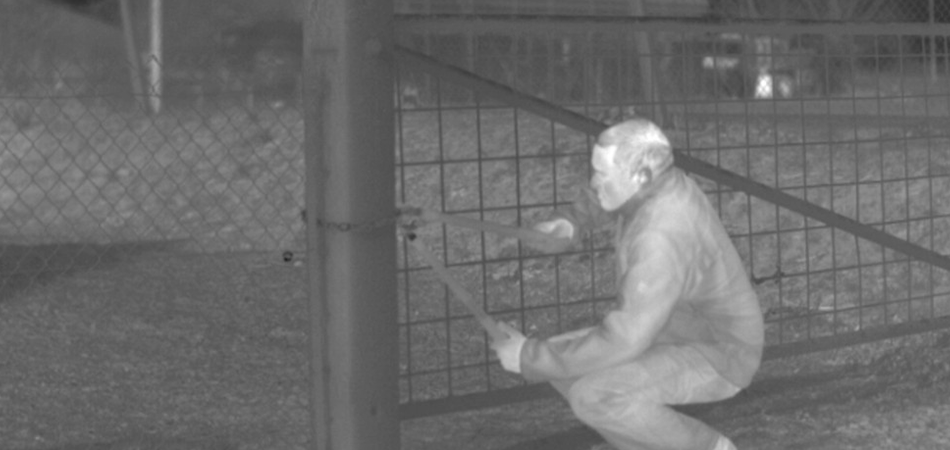We have at one time seen photos with messes of red and yellow colors at large. Thermal cameras take such images. Thermal imagers are essential gadgets largely used for commercial and industrial purposes. These devices detect heat emitted from objects, diseases, and storms, among other things.
Besides the commercial and industrial use of these devices, they are also employed at homes and other essential buildings. They are set in the front doors for security purposes. But then, what is the black and white thermal camera? Today, we shall understand what the black and white thermal imagers are. Moreover, we will learn how thermal imagers work.
What is the Black and White Thermal Camera?
The demand for thermal cameras has increased over a couple of years. This is from the outdoor enthusiasts to military and law enforcement professionals. People are nowadays taking advantage of the latest advancements from these devices to get the best from them. But then, what is the black and white thermal camera?
When selecting an excellent thermal imager to use in the market, you need to look at certain factors. Among the essential factors to consider is the final application of the thermal camera. Applications can range from long-range detection; you can use the camera in recreational activities, finding heat leaks, and many others. All these are important considerations to get you a thermal device that will work best for you.
There are both colored, black, and white thermal cameras in the store for sale. All these perform best in specific environments at large. The black and white options are best at delivering more natural-looking images. These thermal cameras perform best in detection, identification, and recognition of both moving and static objects. They are commonly used for shooting, reconnaissance, search and rescue activities, hunting, and border control.
On the other hand, the color thermal imagers are best at providing a more illustrative distribution of object temperatures. But then, the images that show up are false-colored. There are details you will find hard to distinguish if you lack the idea of how to interpret them.
Moreover, the image can distract the human eyes due to the bright colors they get represented by. The colored options are great for identifying high-temperature zones and home inspections. They can also detect problems in power lines, fire operations, and evaluate heat leaks.
A color change is employed by the colored thermal imagers to display any form of signal changes. This is different from the black and white thermal cameras that change the intensity to display such changes. Humans have greater intensity detection dynamic range. This makes these thermal cameras the best options since they process results by the brain easier.
How Thermal Imaging Cameras Work?
Both the living and non-living things and objects alike emit infrared light at different levels. The thermal cameras are designed in a way that they can recognize. At the same time, capture these levels at large.
All objects and living things emit infrared rays due to heat transfer that takes place all through. The amount of infrared radiations emitted is what is translated into a temperature. Hotter things produce more radiation. Thermal cameras capture radiations from surfaces and thereby convert them into visual images.
Working on night vision cameras is quite different from thermal cameras. Night vision functions under the principle of capturing only the visible light. The thermal cameras function under the principle of recognizing infrared radiation.
A thermal camera has one microbolometer inside at every pixel. These devices are employed to capture infrared radiation from objects. Their work is to record temperatures and provide an appropriate color to represent it.
The maximum resolution power of the thermal cameras is 640×180. This is relatively low if you compare it to other displays you will find in modern devices such as TVs. They are best designed to capture infrared rays with longer wavelengths.
The thermal camera has a lens that focuses infrared energy emitted from objects into the microbolometer. It is at the microbolometer where the temperature is detected. The microbolometer, after that, creates a pattern underneath the captured infrared energy. Created patterns by the microbolometers are referred to as thermograms.
The patterns are further converted into electrical signals. Electrical signals pass through a circuit board, then in the signal processing unit, and dedicated conversion chips
At the dedicated chips, electrical signals are converted into data that is displayed on the screen. The object is seen, and you can now interpret it.
Frequently Asked Questions
This segment provides a wrap-up of important information about the thermal cameras. Let’s grasp first-hand details on these devices.
Do Thermal Cameras Work Through Glass?
No, glass materials act as mirrors for radiations emitted from objects. You will only see a reflection of your image if you point a thermal camera on a glass. Glass is highly reflective. Thus it will only show the reflective temperature an object emits.
Do Thermal Cameras Work Underwater?
No, they work poorly underwater. This is due to water’s tendency to block a lot of wavelengths of infrared radiations like glass.
Can Thermal Imaging Cameras See Through Walls?
No, these devices aren’t powerful to see through walls. These surfaces are insulated enough, and thereby they block all forms of infrared radiations.
Final Word
What is the black and white thermal camera? This was our topic of study, and we have discussed it and where they work best. In general, thermal cameras are fantastic devices in several industries, including gas, oil, government facilities, mining, utilities, manufacturing, industrial plants, and in other residential settings. They are employed to detect problems before they develop further, which will require you to use a lot of resources to fix.


